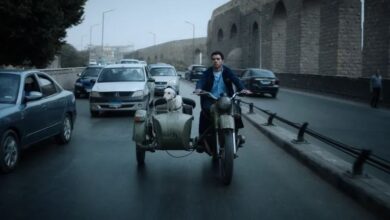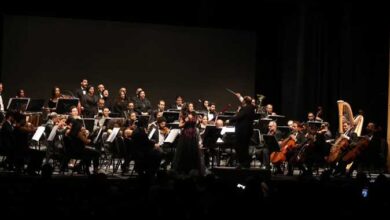The Banati Foundation grabbed the attention of the media and public alike on 20 January with the opening of its second photography exhibition at the Cairo Opera House. An Egyptian organization established in July 2010 to serve street children, the foundation primarily targets girls from the age of one to 14.
While on your way to the exhibition, you should adjust your mind frame: you’re not about to witness the work of professional artists or award-winning photographers, but gaze at pictures taken by the girls the foundation works with, most of whom had never seen a camera until a couple of months ago.
The photographs will dazzle you, however, as you start seeing the world through the eyes of girls who have suffered multiple tragedies in the streets before becoming part of the Banati program. If you arrive with the right expectations, you will enjoy the event and the company of these girls as they guide you through the photographs.
Based in Haram City, Banati is a registered NGO addressing the phenomenon of homeless and endangered children. Teaching photography skills is part of a wider initiative, “Equal Opportunities for Innovative Learning,” which is supported by the Sawiris Foundation for Social Development.
“We have 60 resident children in our accommodation in 6th of October City. We also have an office in Old Cairo and a portable unit that delivers our services to the children in the street directly,” says Rania Fahmy, executive director of the foundation. “What we try to do with our resident girls is to develop their senses so they can use them in a creative and scientific ways.”
According to Fahmy, multiple creative activities are available to the girls, such as drawing, coloring, painting, sculpting, candle-making and photography. “These arts can establish a connection between what they feel and their world. We try to develop their sense of belonging.”
She explains that some events are joint efforts with other institutions including private, international and governmental schools. “That allows the children to work together on their creative work, to create connections between them.”
Fahmy and her co-workers use the internationally acclaimed Montessori method of teaching, which is an approach for children based on the research and experiences of Italian physician and educator Maria Montessori (1870-1952). Based on her observations, Montessori created an environment with materials designed for children’s self-directed learning. Experimental observation of children is meant to bring about, sustain and support their natural way of being.
“Last March, the girls took a 10 day course in photography,” Fahmy explains, “but we decided that this was not enough and added photography to our activities.”
Photographs taken by six of the girls were on sale, in order to raise funds for the foundation’s work.
Standing next to her work and looking around to make sure that everyone is on their best behavior, Noha Ayman, 16 and the oldest present, explains that she would like to grow up to be a tour guide.
“I think Egypt is extremely beautiful and only the people who are born here can understand it totally,” Noha explains, “but first I need to change some things in Egypt so I can deliver the message right.”
Pointing to a picture of a waterwheel she took in Fayoum, Noha sees things in the simple picture that no one else does. “This is not a simple waterwheel. I took this picture because I stood there for a second and tried to understand the waterwheel. I see it as similar to life as we know it. The waterwheel goes fast when given water and effort and stops when the water stops. There are people who understand that and are happy to give water to life, while others would sit aside crying over it.”
Amina Adel, 14, took a picture of an old man in the Hussain area in Old Cairo. He has a cigarette in his mouth and a smile in his eyes. “I took this picture because I found it to be meaningful,” Amina explains. “I couldn’t talk about his rights, or help him with money, so I took a picture of him.”
“He is a person with lots of problems, but he deserves to have his picture taken while he is smiling happily. He deserves to be able to hide his problems behind his smile.” Amina says, smiling.
Participants have demonstrated serious talent that has been widely recognized; one of the photographers, Amal, has been shortlisted for the National Geographic Egypt photography competition, offering a chance to win a trip to the US.
“Amal is not here today, she is spending the week with her family,” Fahmy explains. “She had a lot of problems with her family, as she has a poor family that doesn't support her financially, and her father was treating her poorly.”
The nominated photo, of a small child walking with a huge basket of bread in the Hussain area, brought smiles to the faces of people at the exhibition's opening, and copies of it were bought by multiple viewers.
“Today, just like the last time we organized such an exhibition, the girls are extremely happy. They say things like: I feel it’s my wedding day, I never knew I would be noticeable among people, I never knew people would care enough to com,” Fahmy says with a smile.




